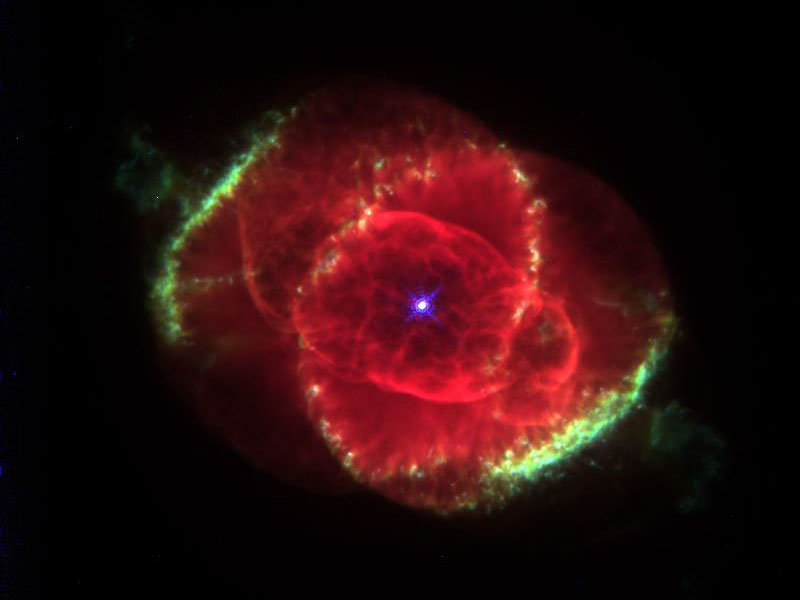
|
Explanation: Three thousand light-years away, a dying star throws off shells of glowing gas. This image from the Hubble Space Telescope reveals the Cat's Eye Nebula to be one of the most complex planetary nebulae known. In fact, the features seen in the Cat's Eye are so complex that astronomers suspect the bright central object may actually be a binary star system. The term planetary nebula, used to describe this general class of objects, is misleading. Although these objects may appear round and planet-like in small telescopes, high resolution images reveal them to be stars surrounded by cocoons of gas blown off in the late stages of stellar evolution.
|
January February March April May June July August September October November December |
| ||||||||||||||||||||||||||||||||||||||||||||||||
NASA Web Site Statements, Warnings, and Disclaimers
NASA Official: Jay Norris. Specific rights apply.
A service of: LHEA at NASA / GSFC
& Michigan Tech. U.
Based on Astronomy Picture
Of the Day
Publications with keywords: Cat's Eye Nebula - planetary nebula - binary star
Publications with words: Cat's Eye Nebula - planetary nebula - binary star
See also:
- APOD: 2025 June 9 Á Between Scylla and Charybdis: A Double Cosmic Discovery
- APOD: 2025 May 14 Á NGC 1360: The Robins Egg Nebula
- APOD: 2025 April 27 Á IC 418: The Spirograph Nebula
- APOD: 2025 April 16 Á Halo of the Cats Eye
- APOD: 2025 April 15 Á Planetary Nebula NGC 1514 from Webb
- Planetary Nebula Abell 7
- The Medusa Nebula
